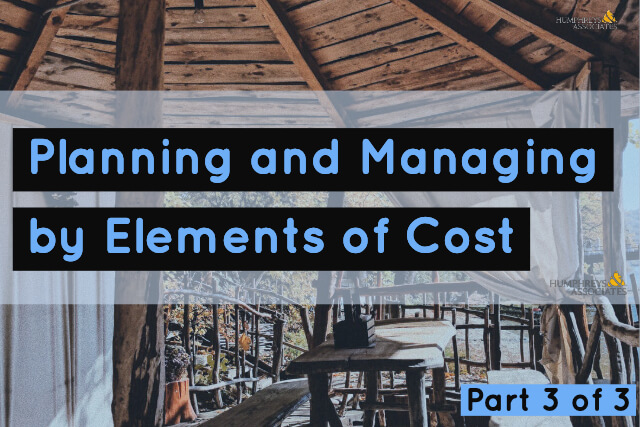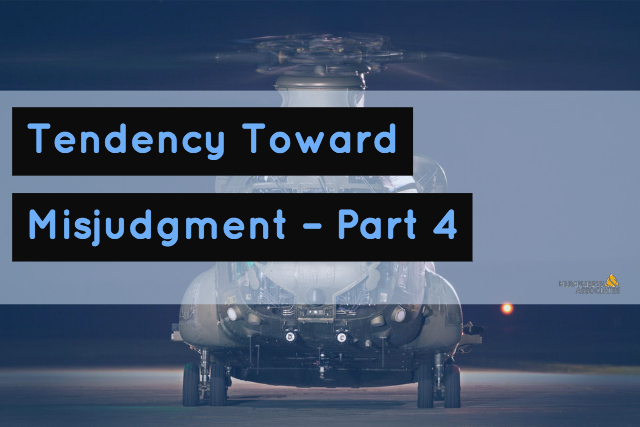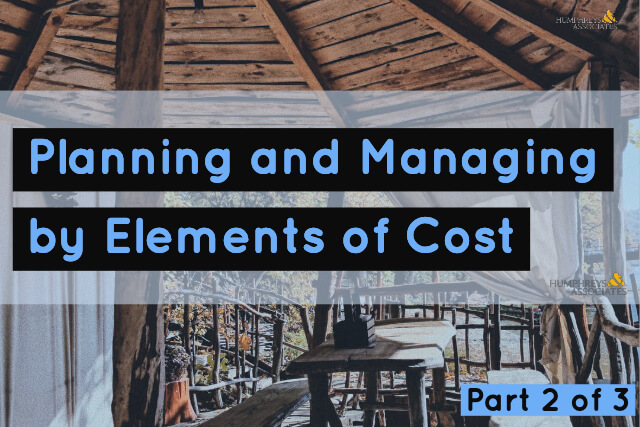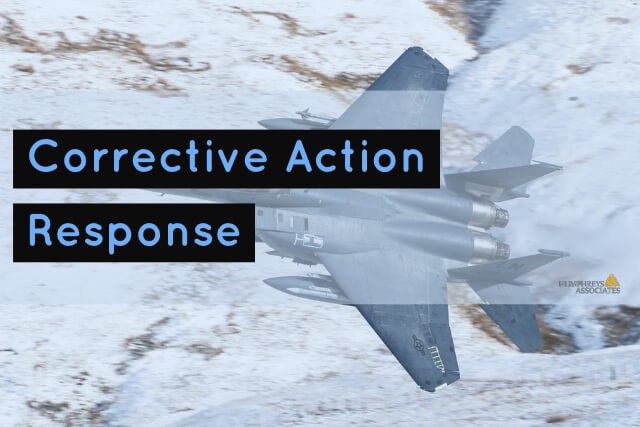Earned Value Management System (EVMS)
Planning and Managing EVM by Elements of Cost (EOC) – Use a New EOC – Part 3

<< Review Part 2
In Part 2 we talked about the over-application of EOCs at or below the Work Package level and how a CAR assuming that a charge against an Element Of Cost (EOC) equals a charge against a “zero-budgeted WP” was inaccurate.
Use a New EOC
Both of the examples from part 2 were over-applications of the EOC requirement. The point here was that the work (it was to design a circuit card), was planned as labor and was also accomplished (earned) in the month it was planned; so the value would be “earned” as planned. In that period, however, it happened that the planned resource was not available, so the work was actually accomplished using a different EOC such as a subcontractor engineer. The contractor’s system properly showed that the design had been completed and the value earned and that the ACWP for that completion was also in the system (i.e. consistent with the BCWP). However, it just happened to be the Subcontract EOC instead of the Labor EOC originally planned, and the CAM addressed the cost difference in the VAR for the Control Account. The team’s comments on the CARs were that the CAM should have replanned the effort using the new EOC instead of the original one. The problem with this is that in many cases the CAM does not know the original resource is not going to be available until the day it happens. There would (1) be no time to process the change and (2) the change would occur in the “freeze period” (actually in the current month), and (3) this could result in unnecessarily large numbers of Change Requests since these types of events commonly occur in the industry.
Noted instances:
- Work planned and earned as internal labor (Labor EOC) had to be performed by contract support (subcontract EOC) in that period because of the non-availability of the planned resource.
- [Some Contractors consider each labor grade a separate EOC within labor] Work planned and earned for an Engineer 2. However, the period the work was performed used an Engineer 3 (higher cost).
- The plan was to build sub-assemblies in-house (Labor EOC), but a machine breakdown necessitated having a vendor provide substitute off-the-shelf assemblies (Material EOC) that month.
In each of these cases, the “EOC ACWP substitution” was temporary, and the work resumed the next period as planned, using the originally planned Element of Cost. The key here is that in each case, the work was performed, and so it was earned; as it should have been. The only difference was that a different EOC was used to accomplish the work – a simple Cost Variance. While it is certainly true that each WP (and PP) should be planned and WPs earned using a single EOC, the misinterpretation here was that every EOC then is a Work package and they are not. In other words, temporarily using a different Engineer category than planned, or using contract support instead of internal labor, or substituting a purchased material item instead of fabricating internally, etc. simply represents a Cost Variances, and should not be cited as a violation of the EVMS Guidelines.
The “consistency” required by the Guideline and the sub-question is that the EOC actually used was expended in the same period in which the work was completed and the Earned Value claimed (i.e. consistent with the BCWP). The variance analysis would show BCWS, BCWP, and ACWP at the CA level with the EOC details at lower levels.
Now for the big “HOWEVER”!
If the switch in use of the alternate EOC is short term, then the differences should be addressed as a Cost Variance (which could be higher or lower than with the planned EOC); HOWEVER, if the change is expected to be permanent or long term, then the CAM should replan the remainder of the work package using the new EOC, and the EAC should be updated, as well, to reflect the new anticipated total cost using that revised EOC.
Note: Some contractors have what is called a “gray badge” environment, whereby a subcontractor charges their labor directly into the Prime contractor’s labor system. Under this arrangement, for this subcontractor, there would be no difference in EOC if the subcontractor performed the work instead of the prime contractor.
Humphreys & Associates is available for consulting and information on this topic. Give us a call!
Planning and Managing EVM by Elements of Cost (EOC) – Use a New EOC – Part 3 Read Post »
EIA 748-D Released – Change Notes

Portions extracted from the EIA-748-D © SAE International (with permission).
Are you aware that a revision to the Society of Automotive Engineers (SAE) / Electronics Industry Alliance (EIA) Standard 748 Earned Value Management Systems, has been released? The new revision is SAE / EIA 748-D. Officials have been discussing the changes at recent industry conferences.
Sections 2.1-2.5 – No Changes to EVMS Guidelines
No changes have been made to the 32 EVMS Guidelines in Sections 2.1-2.5 of the standard. The changes are primarily clarifications of the existing text:
Section 1 – Additional 4th Note
Section 1 “Scope of EVMS” previously “Introduction” in 748-C now has an additional 4th Note:
“Note 4: There are occasions where it is beneficial for complementary systems or methodologies (e.g., Enterprise/ Manufacturing Resource Planning, Agile Software Development, Theory of Constraints) to interface with the EVM System. These complementary systems or methodologies can be used to deliver functionality and value to the customer while EVM provides a standardized method for measuring progress and reporting across the contract. The EVMS documentation should describe the interface content as well as the recurring control process to maintain data conformance and system compliance.” © SAE
Section 2.6 – Six Additional Terms
Section 2.6 “Common Terminology” includes six additional terms:
ACTIVITY OR TASK: An element of work with an expected duration in the network schedule that is performed during the course of a project. Activities generally have expected resource requirements used to determine the budget for the work effort. One or more activities may relate to a work package.
AUTHORIZED UNPRICED WORK (AUW): A contract scope change which has been directed by the customer’s contracting officer but has not yet been fully negotiated/definitized. It includes a value, excluding fee or profit, typically associated with the authorized, unpriced change order.
ELEMENT OF COST (EOC): The categories of cost such as labor, material, subcontractor, and other direct costs as defined by company accounting practices.
OVER TARGET SCHEDULE (OTS): A replanned schedule baseline that extends beyond contract milestone dates, delivery dates, or completion date. An OTS is usually accompanied by an increase in budgets resulting in a corresponding Over Target Baseline (OTB). It typically requires customer approval to implement.
RISK AND OPPORTUNITY (R&O): An uncertain future event or situation that could impact the ability to achieve overall project requirements within defined cost, schedule, and technical objectives. Risk has two components: (1) the probability (or likelihood) of a particular outcome and (2) the consequences (or impact) of that outcome. The consequences of risks are typically thought of as negative that may need to be mitigated to minimize the impact to the project. A risk event with positive consequences is referred to as an opportunity that may be captured as a benefit to the project.
SUMMARY LEVEL PLANNING PACKAGE (SLPP): An aggregation of far-term work efforts (scope, schedule, and budget) that are not able to be identified at the control account level but can be distributed to reporting level WBS elements.
Section 2.6 – Term Changes
Section 2.6 “Common Terminology” includes changes/clarifications to existing terms:
ESTIMATE AT COMPLETION (EAC): The current estimated total cost for authorized project work. It equals the cumulative to date Actual Cost of Work Performed (ACWP) plus the estimated costs to complete (Estimate to Complete or ETC) the authorized work remaining.
LEVEL OF EFFORT (LOE): Support type activities that lack measurable output or product that cannot be discretely planned or objectively measured in a practical manner. LOE automatically earns performance with the passage of time, an earned value technique.
MANAGEMENT RESERVE (MR): An amount of the total budget set aside for unplanned, in scope effort that may arise during the course of the project which cannot be identified in advance and is used to handle execution risks. Management reserve budget should be commensurate with the level of project risk. It is not part of the Performance Measurement Baseline (PMB).
OVER-TARGET BASELINE (OTB): A Performance Measurement Baseline (PMB) that exceeds the Contract Budget Base (CBB). It is implemented to produce a realistic schedule and budget plan for the project’s remaining work. It typically requires customer approval to implement.
Section 2.7 – 3 Additional References
Section 2.7 “List of Suggested References” has been updated to include 3 additional references. The complete list is below:
– NDIA IPMD EVMS Intent Guide
– NDIA IPMD IBR Guide
– NDIA IPMD Surveillance Guide
– NDIA IPMD EVMS Acceptance Guide
– NDIA IPMD EVMS Application Guide
– NDIA IPMD Planning and Scheduling Excellence Guide (PASEG)
– NDIA IPMD Industry Practice Guide for Agile on Earned Value Management Programs (New)
– NDIA IPMD Master Definitions List for IPMD Guides (New)
– NDIA IPMD Earned Value Management System Guideline Scalability Guide (New)
Sections 3 thru 5
In Section 3.2.1 WBS Dictionary, discussion regarding segregation by WBS element for direct costs has been removed.
In Section 3.3.1 Control Accounts, discussion regarding guidance that a Control Account shall not span multiple WBS elements has been removed.
In Section 3.3.1, a new figure, Figure 1 – Establishing Control Accounts was added.
In Section 3.4.3 Subcontract/Procurement Schedules, the phrase “high risk” has been removed.
In Section 3.8.2 Cost Performance, The Labor Rate and Efficiency variance calculations were corrected. The corrected equations are below.
• Labor Rate Variance Calculation = Actual Hours x (Earned Rate – Actual Rate)
• Efficiency Variance Calculation = Earned Rate x (Earned Hours – Actual hours)
In Section 3.8.2 Cost Performance, the acronym “EAC” has been replaced with “ETC”.
In Section 3.10.2 Authorized Changes, discussion regarding allowable changes for optimum utility has been removed.
In Section 4 System Documentation, the term “GEIA” has been replaced with “SAE”.
In Section 5.1, Evaluation Process, the term “officer” has been replaced with “authority”.
In summary, EIA 748-D has added/modified a few items for clarification but does not change any of the implementation, reporting, surveillance, or enforcement aspects of Earned Value Management Systems.
Purchase a copy of the standard here: https://www.sae.org/standards/content/eia748d/
EIA 748-D Released – Change Notes Read Post »
Planning and Managing EVM by Elements of Cost (EOC) – Over-Application of EOCs – Part 2
<< Review Part 1
In part one of our series on Elements of Cost (EOC), we explained what EOCs are and gave an analogy of how EOCs would relate to building a patio. We also reviewed how EOCs can be “over thought” and emphasized the importance of properly applying indirect cost rates. This post is going to be focused on the Over-Application of EOCs.
Over-Application of EOCs
During some government reviews, the teams issued Corrective Action Requests (CARs) citing multiple examples of ACWP occurring on “zero-budgeted” Work Packages within Control Accounts. On the surface, this sounds pretty serious, but there were several “over-applications” in play here.
- First, the review was being performed at (and in some cases below) the Work Package (WP) level, when the intent of the Guidelines has always been for variance analysis to be performed at the Control Account (CA) Level;
- Second, the CAR assumption was that a charge against an Element Of Cost (EOC) equals a charge against a “zero-budgeted WP”.
For the first point we’ll look at Guideline 22 in the EVM Standard 748:
GL 22. At least on a monthly basis, generate the following information at the Control Account and other levels as necessary for management control using actual cost data from, or reconcilable with, the accounting system:
1) Comparison of the amount of planned budget and the amount of budget earned for work accomplished. This comparison provides the schedule variance.
2) Comparison of the amount of the budget earned and the actual direct costs for the same work. This comparison provides the cost variance.
Even the government’s sub-question e. under GL 22 reiterates this requirement:
e. Are the following elements for measuring performance available at the levels selected for control and analysis (at a minimum at the control account level):
1) Budgeted Cost for Work Scheduled (BCWS)?
2) Budgeted Cost for Work Performed (BCWP)?
3) Actual Cost of Work Performed (ACWP)?
While the intent of the words “and other levels” and “at a minimum” was to ensure that contractors did not only perform analysis at some higher, summary level, the government’s choice of those sub-question words also opens up the application of the analysis at lower levels. Be that as it may, the over-application still exists where it should not. Variance Analysis is supposed to be at the CA level and rolled up to higher levels for analysis. The bottom line for each of the CARs written is that BCWS, BCWP, and ACWP existed at the Control Account level, and the EOC visibility was available for variance analysis explanations at the lower levels in the contractors’ systems.
For the second point, let’s look at all the EVM Standard 748 Guidelines, specifically Guideline 16.
There is no Guideline that specifically requires BCWP to be claimed the exact same way BCWS was planned; however, it is intuitive that this has to be true in order for cumulative values for BCWP and BCWS to equal BAC so that the work can be considered complete. [While the government’s sub-question b. under Guideline 22 expects BCWP to be calculated “consistent with the way the work is planned”, GL 22 itself (above) is silent on that inferred expectation.] The Guideline 16 and its sub-question b. also require consistency of the direct costs:
GL 16. Record direct costs in a manner consistent with the budgets in a formal system controlled by the general books of account.
- Are elements of direct cost (labor, material, subcontractor, and other direct costs) accumulated within control accounts in a manner consistent with budgets using recognized acceptable costing techniques and controlled by the general books of account?
In the examples noted for the CAR referenced above, the work package task was a specific Element Of Cost (EOC) and was planned and completed in the same period, but no ACWP was accumulated for that specific EOC because the work was accomplished using another resource that fell into another EOC category. When the team looked at that EOC containing the ACWP, they interpreted the finding as a “zero-budgeted Work Package” with ACWP against it. [They also cited the original Work Package itself for having BCWP with no ACWP for the element of cost that was planned and earned.]
Humphreys & Associates is available for consulting and information on this topic. Give us a call!
Planning and Managing EVM by Elements of Cost (EOC) – Over-Application of EOCs – Part 2 Read Post »
EVM Training – Decision Making and Charlie Munger – Tendency Toward Misjudgment – Part 4

This is the fourth and final blog in this series about the human tendency toward misjudgment. In Parts 1, 2, and 3 we learned about Charles (Charlie) T. Munger, Vice Chairman of Berskshire Hathaway and partner of Warren Buffet, and his listing of 25 innate human tendencies toward misjudgment that we harbor. In those three blogs we learned much from him and we will continue that learning in this blog. Charlie was born in 1924 so, at the time of this blog, Charlie he is 94, a wise old man from whom we should learn.
As mentioned previously, I went through each of the 25 “tendencies” that are defined and discussed by Charlie and tried to think about how the tendency could disadvantage or could potentially aid decision making.
Kantian Fairness
The first of the tendencies discussed here is the “Kantian Fairness Tendency.” This does not apply to all people from all cultures around the world, but it certainly does to those you are most likely to be engaged with; those at your place of work. The tendency is that people tend to give and expect fair treatment. It is something innate and reinforced with something learned. An example would be the way people line up to wait and the way they expect others to obey the unwritten rules of waiting in line. People expect to be treated fairly and will wait their turn for that. Applying this tendency to decision-making, people expect the decision process to be fair. If it were to be skewed and unfair, they would hesitate to participate. Being unaware that there is such a bias can be dangerous to the decision-making process. If unfairness could be introduced and carefully hidden, the outcome could be skewed. Any unfairness must be rooted out, no matter how difficult.
Influence-from-Mere-Association
The second tendency covered in this fourth blog is subtle. It is the “Influence-from-Mere-Association Tendency.” Munger points out the problem with this tendency by explaining that if something good happened to us in the past, we will be more influenced by things that were associated with that good event or outcome. Something that is associated with a known good thing is not weighed and measured by the same standards as something that is a stand-alone non-associated item. But we do not really know in all cases that the things we are considering really factored into the previous success at all. If we are told that or assume that or just plain “know that” from company lore, we are on dangerous ground. We would need to know the exact cause and effect chain for the good outcome in the past to be sure we are dealing with a positive associated influence. About the best we can do is be skeptical and challenge things that are presented as associated with previous good outcomes. Our process should require proof of association when association is a factor.
Social-Proof
The third tendency here is one we should all be very familiar with. Munger calls it the “Social-proof Tendency.” You might know it by the name “groupthink” or “the herd instinct.” We need to understand that people tend to act and think as the others around them act and think. This tendency can become an issue in a team or group charged with deciding a crucial issue. Will the members have the strength for independent thought and action or will many of them “go along to get along”? The instinct can be much worse if the situation is a high stress one. The herd must react quickly to stress and the first movement, of the first spooked members, could lead to a stampede. Our decision process has to be sensitive to this and counter it is if needed. Deciders must be coached to avoid being a blind follower and to value independent thought and action. If necessary, the process might have to require mixing the attendance or substituting more independent-minded people.
Contrast Mis-reaction
Another powerful tendency is also one that can be easily exploited against the process. This is the so-called “Contrast Mis-reaction Tendency.” This can be seen as the reaction toward what is perceived as the lesser of two evils. We have all been taught that it is good to compare and contrast choices; but that is only useful when enough truth is known about the choices. A manipulative manager might use this tendency for mis-reaction by explaining to the deciders that there are two outcomes. The first is Outcome A which is described by the manager in such terms as to leave no doubt this is a terrible choice. The second one is Outcome B, also not good, but which appears to be so much better that A; by contrast, our reaction is a mis-reaction toward the one that is automatically more appealing. In this way, the unknowing members of the team see the obvious contrast and are drawn to the outcome favored by the manager while, to them, the whole process appears above board. Our process must be made to present all the choices and to treat them factually, so an uninfluenced choice is made. A good decision-making process does not make false contrasts.
There is not enough time to cover all the tendencies fairly. To do that, you should attend a Humphreys & Associates workshop to explore the entire subject of decision making.
Crucial Decision
In closing, I am going to postulate a situation where the authority to make a crucial decision is assigned, in a high stress situation, to a weak “groupthink team” with a strong leader who has a bloated opinion of himself. The team has been shown some very limited choices, some of which have been described as distasteful ones. The leader is in denial and trying to avoid loss. He wants to force a quick decision. How do you rate the chances of this scenario yielding a good well-considered decision, now that you can see the underlying tendencies to misjudgment?
EVM Training – Decision Making and Charlie Munger – Tendency Toward Misjudgment – Part 4 Read Post »


